Home > Blog > Weather
PAGASA’s Crucial Role during the Pandemic
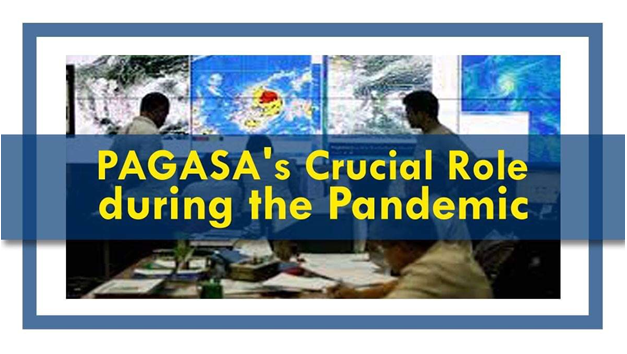
The COVID-19 pandemic continues to be in full swing with currently over 20 million confirmed cases worldwide. In the Philippines, the total number of cases has reached 148,000 with over 2,000 people dying from the disease.
But the pandemic isn’t the only crisis the country faces. Right now, the Philippines is in the middle of typhoon season. According to the Philippine Atmospheric, Geophysical and Astronomical Services Administration (PAGASA), more tropical cyclones enter the Philippine Area of Responsibility (PAR) than anywhere else in the world each year. An annual average of 20 tropical cyclones develop in the region, 8 to 9 of them traversing the Philippines.
The peak of typhoon season, wherein 70% of typhoons develop, happens between July to October. According to PAGASA, the country may experience 8 to 13 tropical cyclones from August until the end of the year. More than ever, Filipinos need the weather bureau’s comprehensive and reliable forecasts to help them ensure their safety this pandemic.
 Source: PAGASA
Source: PAGASA
Getting to Know PAGASA
PAGASA traces its roots back to the Observatorio Meteorologico de Manila (now Manila Observatory) a scientific research institution established by the Jesuits in 1865. Involved in the systemic observation of Philippine weather, it first issued typhoon warnings in 1880.
In 1901, the observatorio was re-organized and was formally named as the state’s weather bureau. Today, PAGASA, under the Department of Science and Technology (DOST) is mandated to “provide protection against natural calamities and utilize scientific knowledge as an effective instrument to ensure the safety, well-being and economic security of all the people, and for the promotion of national progress.” (Section 2, Statement of Policy, Presidential Decree No. 78; December 1972 as amended by Presidential Decree No. 1149; August 1977)
With its mission to be a center of excellence for weather-related information, PAGASA seeks to protect lives and properties through its following products and services:
- weather forecasts and tropical cyclone warning
- flood forecasts and warnings
- climatological and farm weather
- research and development
- information, education, and public outreach
- astronomical services
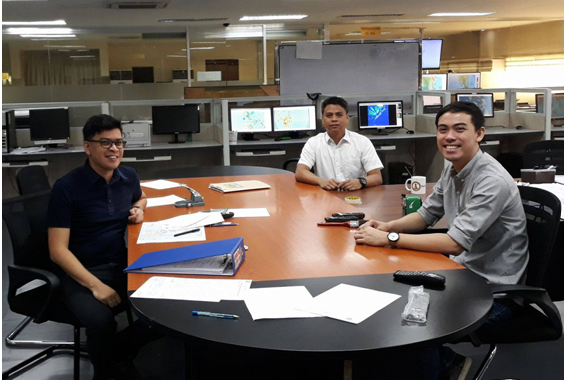 PAGASA weather forecasters before the pandemic (L-R: Nikos Peñaranda, Chris Perez, Ariel Rojas)
PAGASA weather forecasters before the pandemic (L-R: Nikos Peñaranda, Chris Perez, Ariel Rojas)
PAGASA and the Pandemic
The pandemic impacted public mobility, businesses, services, and many other aspects of daily living. According to Chris Perez, PAGASA spokesperson and senior weather specialist, the weather bureau was no exception. “The restrictions put into effect by the national government to prevent the further spread of the virus affected PAGASA’s day-to-day operations in the sense that only a few personnel are required to report to the office. This posed a great challenge in ensuring the continuous delivery of the agency’s products and services despite the limited manpower.”
PAGASA’s limited physical manpower at the office has been supported by work-from-home personnel since the Enhanced Community Quarantine (ECQ) last March 16. Those assigned to report to office are provided company transportation from their homes to the office then back to their homes after a 3-day or 5-day work assignment. Perez adds, “The same personnel are given grocery allowances, and sleeping quarters to rest after their duty. Key personnel such as the PAGASA Administrator and higher officials report to the office when needed—during the event of a tropical cyclone, the processing of payrolls, and other duties.”
Because health vigilance is a must during the pandemic, PAGASA’s weather division has formed a committee to oversee the health and well-being of its employees—both in the office and working from home. “This ensures that the appropriate number of working personnel is met whenever the situation warrants,” Perez explains. “In the case of a personnel getting ‘sick’ and not being able to report for work, this committee will handle the matter in accordance with the national government’s established health protocols.”
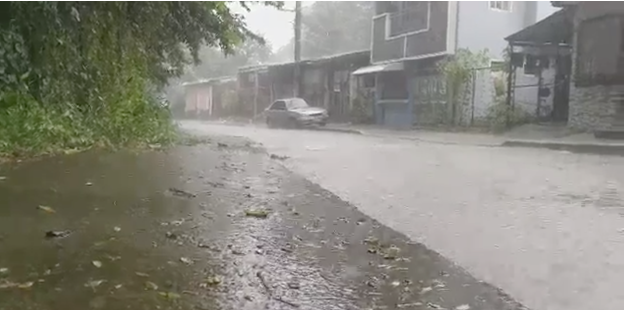 The habagat may enhance tropical cyclones, bringing more rains in the country. (Photo by PM Caisip)
The habagat may enhance tropical cyclones, bringing more rains in the country. (Photo by PM Caisip)
Currently, PAGASA holds webinars to conduct climate forums and educate sectors on the natural hazards the rainy season brings. During the National Disaster Resilience Month last July, PAGASA’s webinars targeted religious organizations and focused on preparedness among children.
Season of both Typhoons and the Pandemic
Since the government’s announcement of the country’s first COVID-19 case in January, 7 tropical cyclones have entered the PAR as of writing.
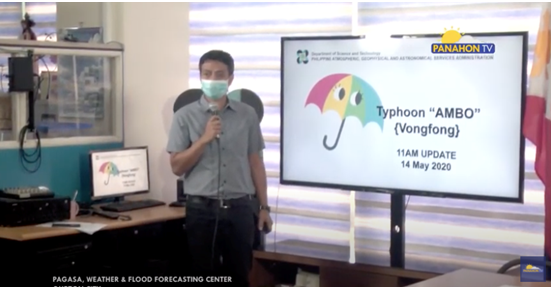 Perez holding a press briefing for Typhoon Ambo last May
Perez holding a press briefing for Typhoon Ambo last May
May 14
Typhoon Ambo (international name: Vongfong) made its first landfall in Eastern Samar. PAGASA recorded five more landfalls that weakened the weather system before it headed inland to Luzon. According to the National Disaster Risk Reduction and Management Council (NDRRMC) last May 20, Ambo caused an estimated damage of Php2 billion in agriculture and infrastructure, and left 5 people dead.
June 11
Tropical Depression Butchoy (international name: Nuri) made its first landfall in Pollilo Island in Quezon. Because Butchoy was expected to produce heavy rainfall in Albay, , the province was placed under disaster “response status.” Butchoy’s rains prompted PAGASA to declare the start of the rainy season in the country last June 12.
July 13
Tropical Depression Carina headed for the Luzon Strait near Batanes and Cagayan. Before leaving, the weather disturbance left over PHP19-million worth of damage in Ilocos Norte in crops and properties.
August 1
Dindo (international name: Hagupit) strengthened from a tropical depression into a tropical storm on August 1. Though Dindo enhanced the southwest monsoon (habagat), bringing more rains, Dindo did not have a direct impact on the country, and exited PAR on August 3.
August 8
PAGASA upgraded a weather disturbance into Tropical Depression Enteng (international name: Jangmi). The next day, it intensified into a tropical storm, enhancing monsoon rains in MIMAROPA, Pangasinan, Benguet, Zambales, Bataan and Antique.
August 9
Just seven hours after Enteng left PAR, Tropical Depression Ferdie developed, raising Public Storm Warning Signal No. 1 in parts of Luzon. While maintaining its strength, Ferdie exited PAR on August 13.
August 13
Tropical Depression Gener entered PAR. No public storm warning signal was raised since Gener was expected to weaken as it moved westward of PAR.
PAGASA’s Crucial Role
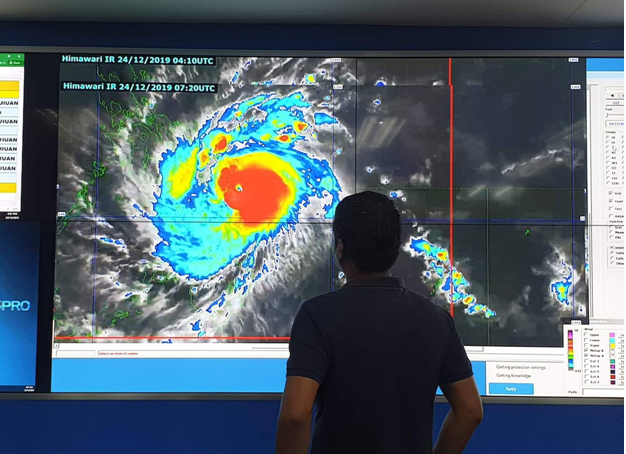 Perez studying a tropical cyclone’s movement
Perez studying a tropical cyclone’s movement
Even before the pandemic, PAGASA has always been an important source of information essential to public health and safety. “PAGASA’s products and services are of vital importance in day-to-day activities,” Perez says. “Matters related to the pandemic can be planned and executed—such as the transport of medical personnel, products and services, or even the usual buying of groceries and medicines of the general public—in accordance with the expected weather.”
Weather forecasts are even more relevant now that natural disasters such as typhoons can hamper health services and damage health infrastructure. According to Christopher Trisos, director of the African Climate and Development Initiative at the University of Cape Town in South Africa, natural disasters can also disrupt the supply of clean water and eat into government budgets already stretched thin by the pandemic response. Physical distancing is also challenging in often-crowded evacuation centers.
Last May, India and Bangladesh were ravaged by Category 5 Hurricane Amphan, leaving over a hundred dead and displacing thousands of families. Partnered with the pandemic, the disaster can impact even more lives.
In the Philippines, the second half of the year marks the time when most tropical cyclones directly affect the country. And coupled with the habagat season commencing from July to September, tropical cyclones can bring continuous moderate to heavy, and even at times, torrential rains, which may cause flooding in low-lying areas and landslides near mountain slopes. These winds and rains, regularly experienced during this period, may inflict damage to properties, causing disruptions in major services such as power, transportation, health and food. “There is a tendency that the current situation may worsen—such as an increase in the number of affected persons or casualties— when there is a disruption to the provision of the these products and services due to weather-related hazards,” Perez explains.
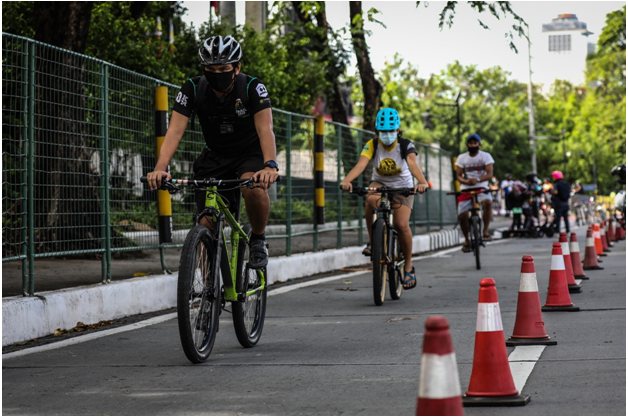 The typhoon season may worsen public mobility already hampered by the pandemic. (photo by Jire Carreon)
The typhoon season may worsen public mobility already hampered by the pandemic. (photo by Jire Carreon)
Right now, PAGASA is testing a new prediction model called the 2-Week Tropical Cyclone Threat Potential Forecast that shows the development of cyclones two weeks before they occur. The agency’s researchers developed this weather forecasting model in partnership with Taiwan’s Central Weather Bureau.
The situation may look grim, but Perez says we can do our part in alleviating it. While we can’t stop weather systems from entering our country, we can slow down the rise of COVID-19 cases in the country. “Heed the government’s call to just stay at home as much as possible, and follow the established health protocols being implemented,” Perez urges. “Lastly, make it a habit to monitor every day the various PAGASA weather updates as these may guide you in planning your day-to-day activities.”
- With additional reports from George Gamayo

